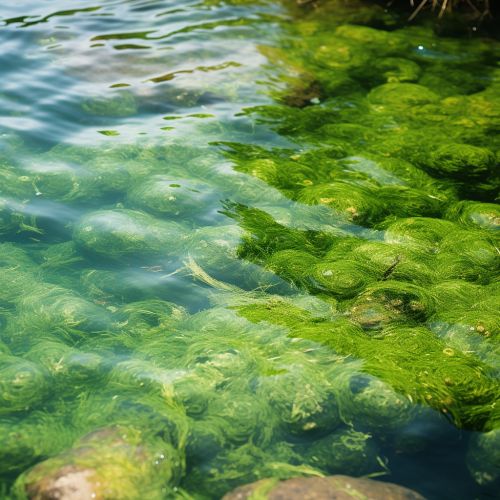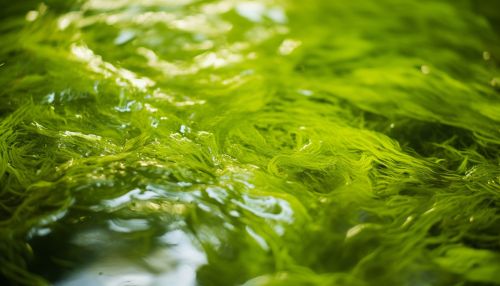Green algae
Introduction
Green algae are a large, informal grouping of algae consisting of the Chlorophyte and Charophyte algae, which are now placed in separate divisions. The land plants, or Embryophyta, are thought to have emerged from the Charophytes.[1]


Classification
Green algae are eukaryotes characterized by chlorophyll a and b and they store food as starch in their plastids. The group is very diverse and does not form a monophyletic group, hence it is considered polyphyletic.[2]
Structure
The body of a green alga is known as a thallus, which can be unicellular or multicellular. The unicellular thalli are either uninucleate or multinucleate. The multinucleate forms can be coenocytic (having multiple nuclei in a common cytoplasm) or non-coenocytic. The multicellular thalli are filamentous or parenchymatous.
Reproduction
Green algae have both sexual and asexual reproduction. Asexual reproduction is by fragmentation, zoospores that are flagellates and non-flagellates, akinetes, aplanospores, hypnospores, and autospores. Sexual reproduction is oogamous, isogamous or anisogamous.
Ecology
Green algae are found in various habitats: freshwater, marine environments, soil, tree trunks, and animals. Some species are endophytes and live inside other plants. Some are symbionts with fungi to form lichens.
Economic Importance
Green algae have economic importance as human food, in the production of hydrogen, removing pollutants from wastewater, and in the production of biodegradable plastics.
See Also
References
- ↑ Kenrick, Paul & Crane, Peter R. (1997). The Origin and Early Diversification of Land Plants: A Cladistic Study. Washington, D.C.: Smithsonian Institution Press. ISBN 1-56098-730-8.
- ↑ Hoek, C. van den, Mann, D.G. and Jahns, H.M. (1995). Algae: An Introduction to Phycology. Cambridge University Press, Cambridge.
